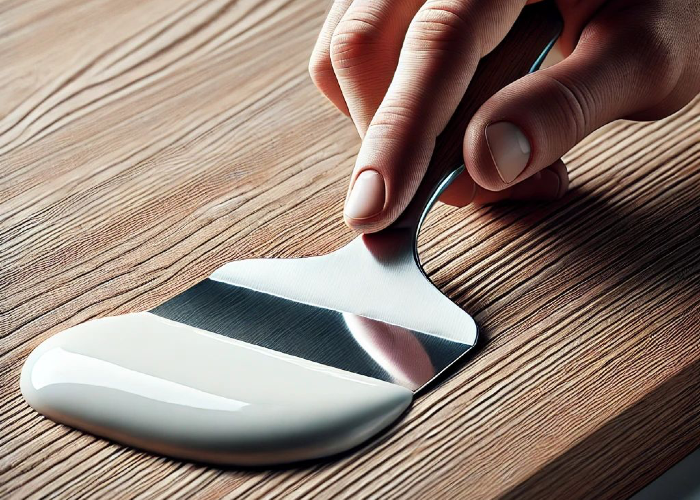
Tutkal Kullanımı ve Tutkal Nasıl Uygulanır?
Tutkalın doğru şekilde uygulanması, yapışmanın güçlü ve kalıcı olması için kritik bir öneme sahiptir. Yapıştırılacak yüzeylerin temiz, yağsız ve pürüzsüz olması, tutkalın yüzeye daha iyi nüfuz etmesini sağlar. Emülsiyon halindeki tutkallar, içerdikleri küçük partiküller sayesinde yüzeyleri birbirine güçlü bir şekilde bağlar. Özellikle mobilya montajı, sunta kaplama ve MDF yapıştırma işlemlerinde bu tür tutkallar sıklıkla tercih edilir. Bunun yanı sıra, bazı kaplama işlemlerinde tutkalın inceltilmesi gerekebilir. Ancak sulandırma işlemi dikkatli yapılmalı ve tutkalın yapışma gücü korunmalıdır.
Tutkal Nasıl Uygulanır?
Tutkal uygulamadan önce, yüzeylerin temizliği büyük önem taşır. Toz, yağ veya kir içeren yüzeylerde tutkalın tutunma gücü zayıflayabilir ve istenen dayanıklılık elde edilemeyebilir. Uygulama sırasında, yalnızca bir yüzeye tutkal sürmek yeterlidir. Fırça kullanımı genellikle en pratik yöntemdir ancak çelik spatula ve benzeri araçlarla hatta el ile de uygulanabilir.
Gözenekli (mesamatlı) yüzeylerde tutkalın uygulanması biraz daha zaman alabilir. Bu tür yüzeylerde tutkal sürüldükten sonra parçaların hızlı bir şekilde birleştirilmesi gerekir. Yapıştırılan parçalar, tutkal sertleşene kadar sabit tutulmalı ve ideal sıcaklık koşulları sağlanmalıdır. Özellikle ortam sıcaklığının 10-15 derece üzerinde olması, tutkalın daha iyi kürleşmesini sağlar. Tutkalın tam olarak kuruması oda sıcaklığında 20 saate kadar varabilmektedir.
Tutkalın yoğunluğu ve kıvamı, kullanım amacına göre belirlenmelidir. Kalın yüzeylerde kullanılan tutkalın sulandırılması önerilmez, çünkü yoğunluk kaybı yapışma gücünü azaltabilir. Eğer inceltme yapılması gerekiyorsa, oran en fazla %30 olmalıdır.
Doğru uygulama teknikleriyle tutkalın sunduğu güçlü yapışma özelliğinden maksimum verim almak mümkündür. Yapıştırma işlemlerinde kullanılan malzemeye uygun teknikleri seçmek, işlemin uzun ömürlü ve dayanıklı olmasını sağlar.
25 Ekim 2021




